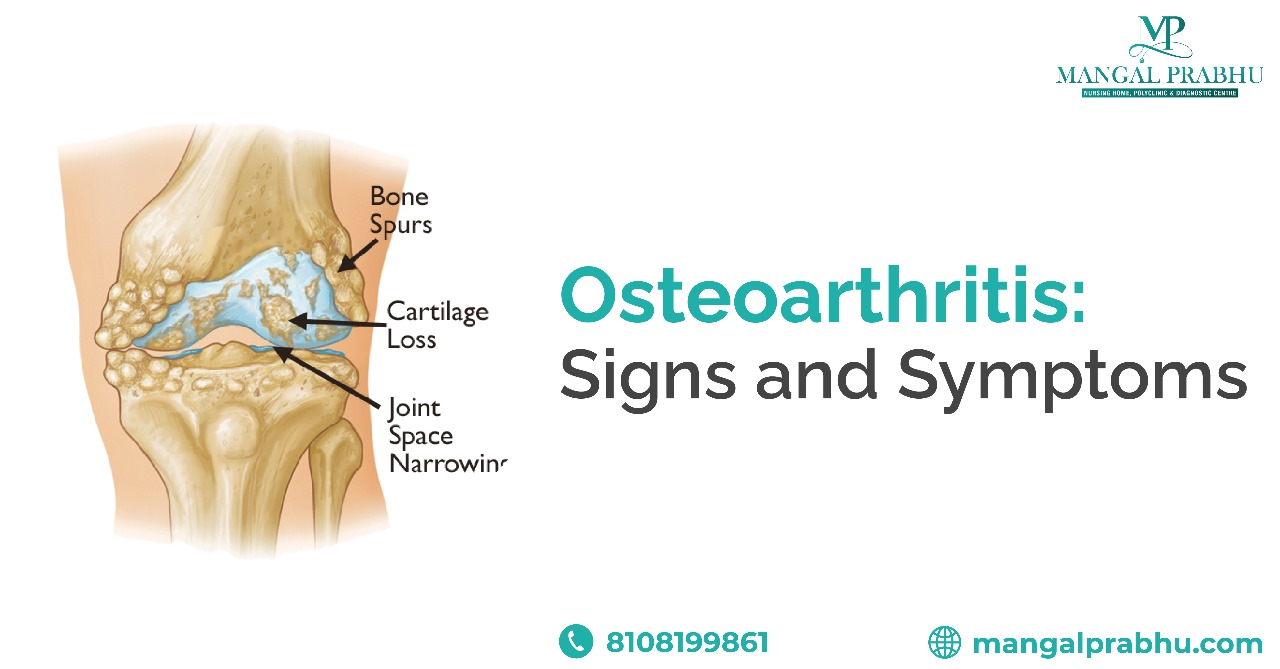
Osteoarthritis: Signs and Symptoms
What is Osteoarthritis?
Osteoarthritis is the most common form of arthritis that can affect your hip, knee, and hand joints. In osteoarthritis, the cartilage that serves as a cushion for your joints can get damaged either due to aging or other causes. When the cartilage is worn, the bones might rub together when you walk, move, or engage the affected joint. You can visit an orthopedic hospital in Navi Mumbai to discuss the best treatment for osteoarthritis.
The condition can affect your mobility severely, as you won’t be able to use your joints as freely as before. Although many home remedies and medications can help manage your pain and discomfort, they can’t reverse the joint damage. For that, you may need knee replacement surgery (depending on how severely it has affected you).
Signs and Symptoms of Osteoarthritis
The most common cause of osteoarthritis is aging. As you age, your cartilage wears down, limiting your motion. However, any fall, a direct hit on your joint, an accident or anything that damages your joint can lead to cartilage damage and hence osteoarthritis. Anyone can develop osteoarthritis, but some people are at increased risk. Examples include older people, diabetic patients, and those with autoimmune diseases.
People with osteoarthritis might develop symptoms that tend to worsen gradually. Here are the common signs of the condition.
- Stiff Joints: You might feel stiff joints as soon as you wake up or stay inactive for some time.
- Pain and Tenderness: You will feel pain when walking, moving, or performing any strenuous physical activity. Likewise, putting any pressure near or on the affected joint might hurt.
- Inflexible Joints: Osteoarthritis can result in the loss of mobility eventually. The condition keeps worsening over time until you will lose your full range of motion.
- Popping Sound: You might hear a popping sound when using the affected joint.
- Inflammation: The worn joint can get inflamed and cause swelling.
Also Read: Is Walking Good For Torn Ligaments?
Diagnosis and Treatment
An orthopedic doctor in Navi Mumbai will conduct a physical exam and order a few screening tests, including a CT scan and MRI, to identify the level of damage to your cartilage. They will ask questions like, how long you have been experiencing the symptoms. They might also order blood tests to rule out the possibility of any other issues.
Here are a few treatment options that can make the condition manageable.
- Medication: Over-the-counter painkillers can relieve pain in the joints. It can be taken orally or in the tropical form, through ointment.
- Exercise and Therapies: Mild exercises like swimming and aerobics can help strengthen the muscles around the affected area and reduce joint tenderness and stiffness. Hot and cold therapies can also relieve the pain and discomfort greatly.
- Using Mobility Devices: You’ll be advised to use a cane and other walking aids to take the pressure off your joint and move without pain.
Surgery is usually not required unless the condition has worsened to a point where you can’t move your joint at all. In that case, you need a complete joint replacement surgery.
